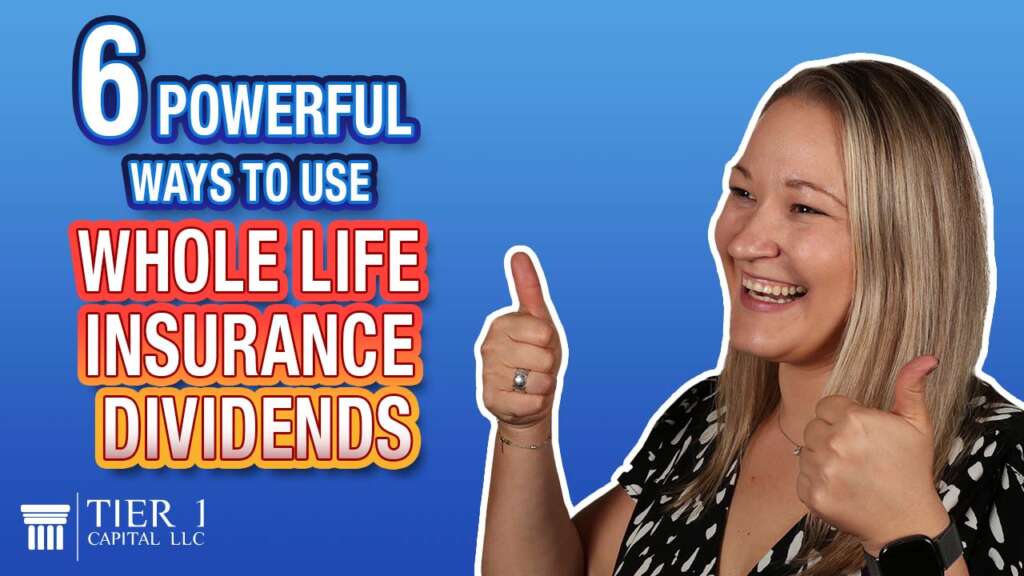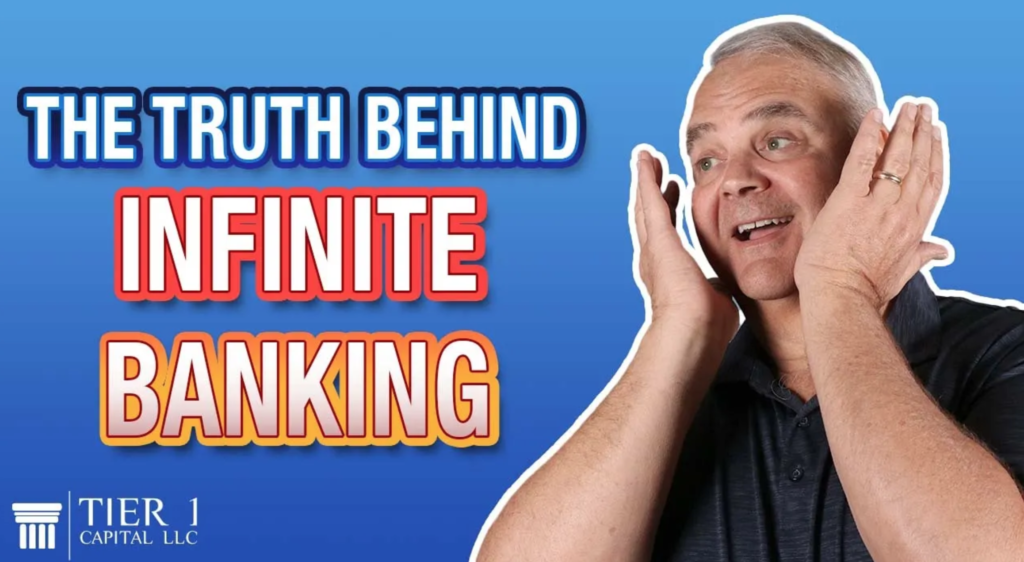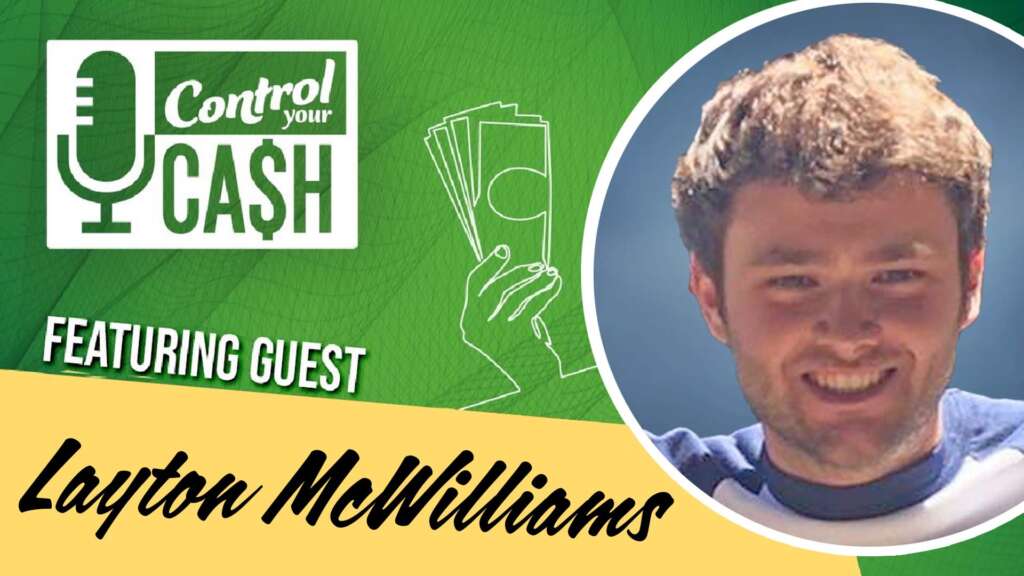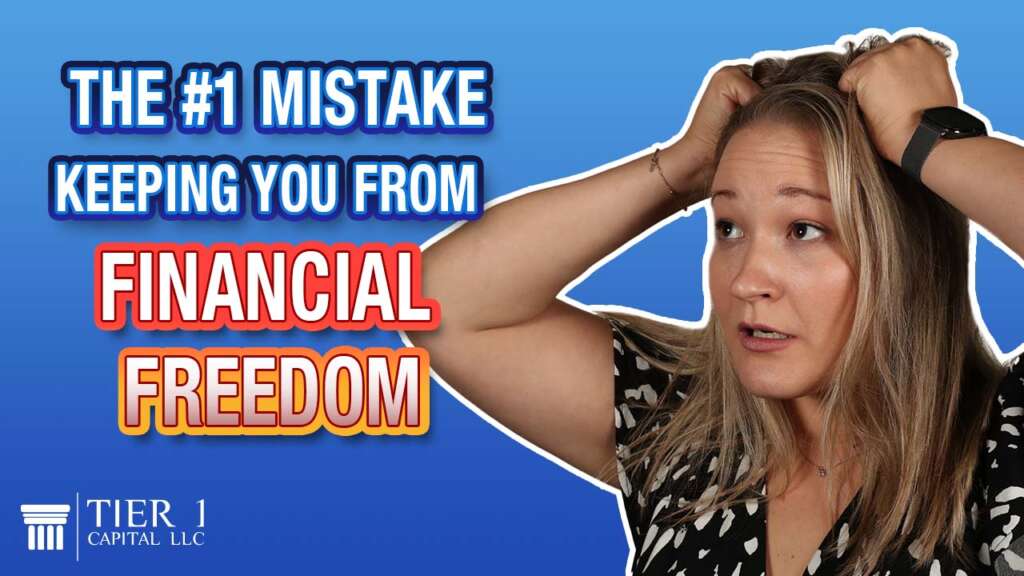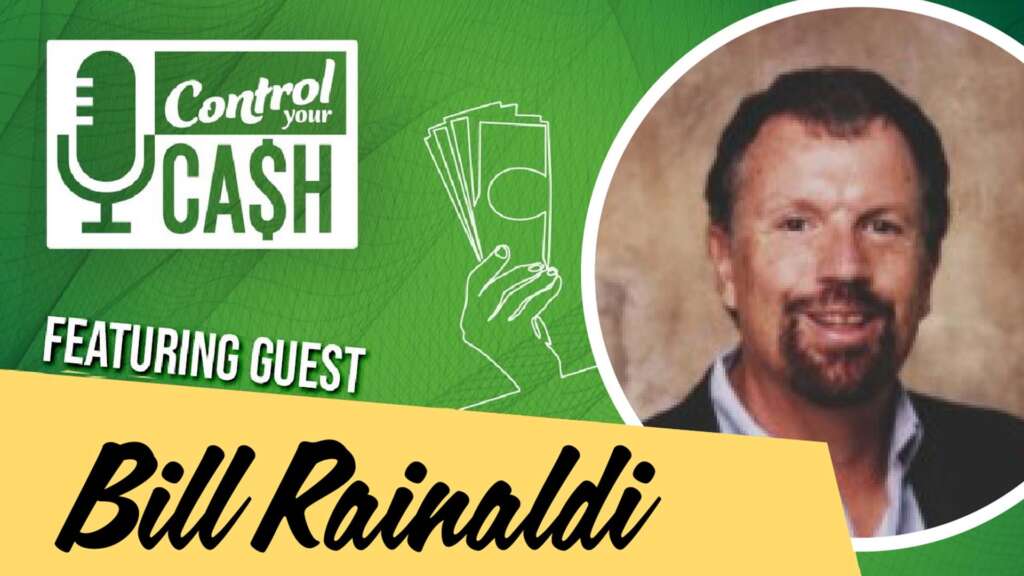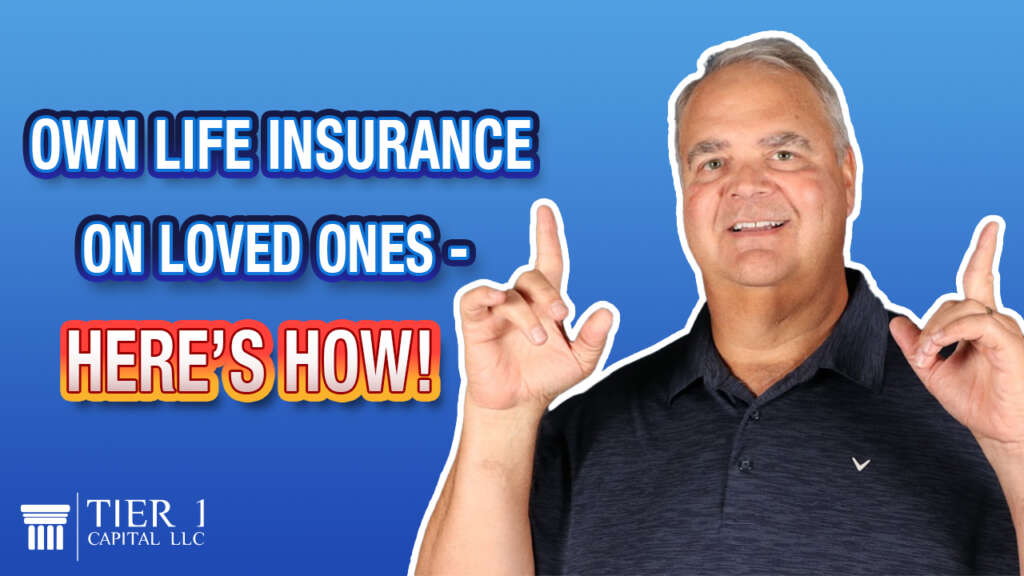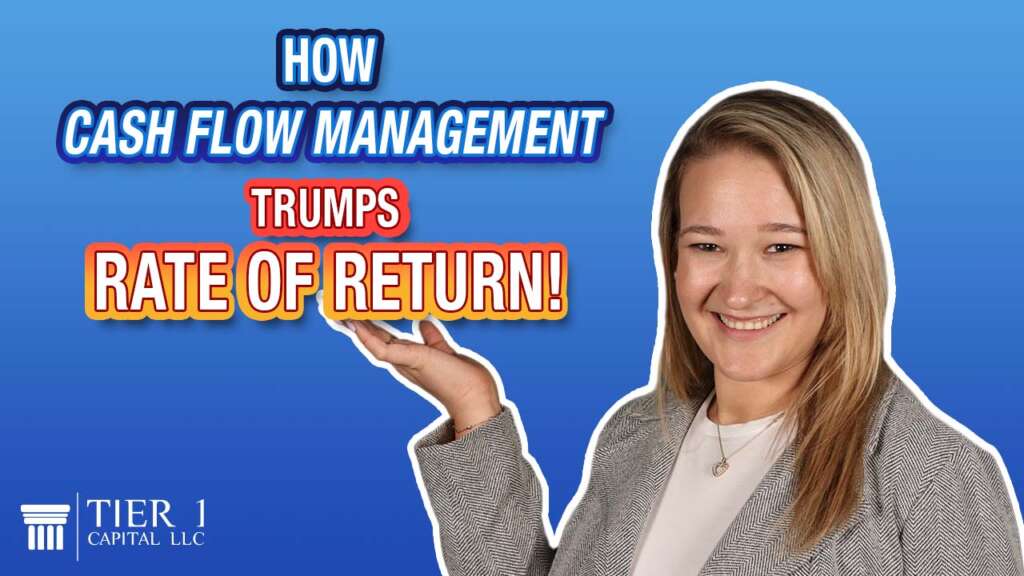Transcript
Olivia : Hello and welcome to the Control Your Cash podcast. I’m your host, Olivia Kirk.
Tim: And I’m your co-host, Tim Yurek. Today, we have a repeat guest with us, Bill Rainaldi. Bill, welcome back!
Bill: Thank you, Olivia. It was an honor to be here the first time, and it’s even more of an honor to be invited back. So, thank you very much.
Olivia: We’re happy to have you! So, Bill, a lot going on out there in the estate planning world, and obviously, last week’s election probably changes things or maybe moves things a little bit. But one of the things that, in anticipation of the Trump tax cuts sunsetting in 2025, there was a lot of positioning in the financial services industry. It seemed that the estate tax exemption was probably going to go down starting in 2026. With all of that noise that was happening at the time, I couldn’t help but think about your dad, Frank Rainaldi.
Tim: Yeah, your dad was an iconic figure in the financial services industry when I came in back in 1985. What I’d like to do is, if you can, let’s talk about your dad a little bit.
Bill: Sure. I grew up in his house, and eventually, I worked for him and became his business partner in later years. I’ll say this about him: I don’t think anything really came easy to him. He became one of the intellectual leaders in the estate planning business, which was amazing when you consider that he was basically a shy and quiet kind of guy. He had to overcome so much in his life to get to where he got. I know, for instance, he lost his own father at a young age, and I think that really brought out this determination in him that he used for the rest of his life.
Bill: For example, my dad was average size, about 5’1″, and yet he went on to become a Division One college football player — an offensive lineman at that. He was outsized by pretty much everyone on the team. He even had running backs bigger than he was, yet he played college football at that level because that’s the kind of determination he had. I’ll tell you one quick story involving me when I was 8 years old.
Olivia: Sure, go ahead!
Bill: Like every kid growing up in that era, I loved playing baseball. I loved going out and playing Little League. I remember this one game — bases were loaded, and I was playing center field. We were up by one run with two outs. The ball was hit to me, a base hit. I picked it up and saw the winning run looked like they were going to try and score. So I reared back and threw the ball as hard as I possibly could. I threw it so hard that I broke my arm in the process. I could hear it break; it was awful. To make matters worse, the catcher dropped the ball, and we ended up losing the game. I came back crying, holding my arm. The shortstop even told me, “It’s okay, Billy, you don’t need to cry. You made a good throw.” He didn’t realize I’d actually broken my arm.
Bill: So I went to the doctor the next day after going to the hospital, and he looked at the x-rays. I had this other problem with my arm. He concluded by saying, telling me that my baseball career was over. I couldn’t play baseball anymore at 8 years old, and I was devastated.
A couple of days later, after that, my dad came to me, and he said, “You know, I talked to the doctor. How about if you learn how to play baseball left-handed?” And I said, “What?” He said, “Play baseball left-handed.” So he took me outside, and I started throwing the ball left-handed. After about 10 minutes or so, I said, “I can’t do this. There’s no way I can do it.” But he insisted that I stick with it.
So I spent that entire summer learning how to play baseball, throwing the ball left-handed, and I came back the following year. For the next two years, I played as a left-handed outfielder, left-handed center fielder on my Little League team. Actually, there was one game the second year where I ended up saving the game by making this unbelievable catch at the end of the game. So I learned a valuable lesson about determination at that point from my dad. That’s a lesson I continued to learn from him all the way through the rest of his life, including the time when we were in business together.
Tim: Well, that’s a great story. You know, that was so creative, just to have him think that way, you know?
Bill: Yeah, that was one of his basic business principles too, that there’s always a creative way to find a solution to a problem you have. In fact, this also applied to me last week. I’ll tell you another quick story, if you don’t mind.
Olivia: Please go ahead!
Bill: I was meeting this new group of people last Friday, and it was a Zoom meeting — an initial meeting — and I really wanted to make a good impression on these people. After the meeting ended, I thought to myself, “Boy, you were really terrible.” I thought, “You really laid an egg. You were supposed to talk to them about all these ways you can help them solve their problems, and instead, you ended up talking all about yourself. You really blew it.” But then I remembered something else my dad had taught me. He said — this is a business principle I learned much later on — he said, “It’s better to have a bad meeting with good follow-up than a good meeting with bad follow-up.”
Tim: Oh, wow.
Bill: So you better believe I’ve already followed up with these people, and we’ll see what happens. But that was another valuable lesson I learned from him.
Tim: Wow, that’s awesome. You know, so I don’t know if we want to venture into this, but especially now that, with President Trump winning, there’s probably a better probability that the estate tax exemption will stay where it is. Is that a fair estimate, Bill?
Bill: I think all bets are off right now, Tim. Up until the election, for the last few years, the base assumption in the estate planning industry was always that the Tax Cuts and Jobs Act of 2017 would be allowed to expire. That meant not just the estate tax reduction or enhanced exemption but also the income tax cuts. The thought was always that by the time the law was set to expire, there would be some sort of divided government. You know, the Democrats would hold one house of Congress, the Republicans would hold the other, or the Democrats would hold the White House — or vice versa. There was always going to be that kind of balance in there to prevent changes. It was never thought that the Republicans would hold all three — the White House, the House, and the Senate.
Bill: Now that that’s the case, we’ll see what happens. I think there’s at least a halfway decent chance that some of the provisions are going to be renewed. I don’t know about all of them, but they’re going to have to get to work, and they’re going to have to get into committees and whatnot and try to figure out what to do. I think there’s a good chance that the estate tax, as you mentioned, the exemption right now is $13.6 million per person. So what that means is that any married couple who has less than $27 million doesn’t have to worry about the estate tax. If that’s allowed to expire, then that amount gets cut in half back to where it was when we used to do our estate planning work — to a much lower figure than that.
Bill: Now, even that lower figure is still not going to affect that many people, right? There aren’t that many people with $13.6 million as a married couple. But there are going to be more people affected if that rule changes. So, we’ll see what happens. I think there’s a halfway decent chance that now at least they’re going to extend that law and keep it at that higher amount, but we’ll see.
Olivia: Yeah, and even though there aren’t a lot of people, for those people who do fall into that category, it’s a big deal for them, right? Because the estate tax is, what, 40% of whatever is there, right? The government’s going to get 40%, so if you fall in that category or don’t fall in the category currently and are going to, that planning is important. Figuring out whether it’s going to impact you is a big deal monetarily for your estate.
Bill: Yeah, if it does expire, then a lot of the older concepts my dad used to talk about all the time are going to come back into vogue. So, we’ll see what happens. It could go either way. But you’re right, Olivia, in the fact that the estate tax rate is 40%, and that’s pretty steep. That’s going to get your attention — you could lose 40% of your assets in one shot.
Tim: It’s especially troubling, you know, being a steep tax, and it’s progressive as well, right? So the larger your estate, the higher the rate.
Bill: Not really. I mean, the maximum is 40%, but we assume most people are going to be at that 40%.
Olivia: Right, right.
Bill: But here’s the thing I have trouble with on the estate tax. We’re already taxed on our income, and then with that after-tax money, if we build a business, are successful investing, or save money, we build a significant estate. Then they come back and get you again. It’s like there’s no incentive to be successful financially.
Tim: Yeah, I mean, I think the government’s answer to that is that what they’re taxing is your right to give your property to whoever you want. And that’s… you know, I tend to agree with you, Tim, on that. I think… and the other thing I would also point out, besides that, is that if you look at where the government gets its money, it’s primarily income taxes and payroll taxes. This is like a third-step cousin when you talk about the estate tax. In other words, it doesn’t generate that big of a percentage of their overall revenue, so they wouldn’t be giving up that much to extend those exemption amounts.
Bill: But I just want to say, Tim, I agree with you 100% in the sense that you give someone an incentive to go out and work and to build an estate, and if you take away that incentive, all of a sudden it has consequences.
Tim: Yeah, and it seems to me that the estate tax, because we’re not talking about a lot of money on an annualized basis that comes into the Treasury through estate taxes, it’s almost like it’s a dog whistle to say, “We’re going to make the rich pay their fair share.” The only problem is, you know, with all due respect, yeah, $13 million is a lot of money, but it’s not like “screw-you money,” right?
Bill:
Tim: So, you know… and again, when you think… like, we see it because we’re on the front line working with successful business owners, successful people, and we see how hard they work. And it’s not just how hard they work to build their business or their lifestyle, but it’s how hard they work to try to maintain it as well. You know, I had one of my first clients going back to 1986. He said something to me that I’ve remembered to this day. He said, “You know, having money or having wealth is like having teeth.” And he said, “You know, when a baby is born, it’s born without teeth, and then for the first year or two of its life, it works as hard as it can to make those teeth or to have those teeth come out so that they can use them. And once those teeth are there, that child has to work the rest of its life to keep those teeth.” And he said, “That’s how it is with wealth. Nobody…” And this guy was a self-made guy, and he said, “Nobody handed me anything. I had opportunities, I took advantage of them, some didn’t pan out, and the ones that did put me where I am today, and I’m grateful for that. But nobody saw the blood and sweat and tears that had to go in and the anxiety when some of the things that I was trying to do didn’t work out. And I bore that risk as well as the reward of the ones that were successful.”
Olivia: Yeah, and whose money is it, right?
Tim: Exactly.
Olivia: Isn’t it yours? Don’t you have the right to do what you want with that money? Isn’t that basic freedom that we have?
Bill: Ostensibly, you would think
Bill: And just to evolve the discussion a little bit, Tim, I know one of the things my dad used to say when we talk about protecting your assets is that sometimes it’s better to control money than to actually have it. And that gets into the concept of a life insurance trust and what a great vehicle that is to protect your assets for future generations. If you control the money but don’t actually own it, then guess what? Your creditors can’t get to it because it’s not your money. And if you got divorced, for example, your ex can’t get to it because it’s not your money.
Bill: And that’s one of the key concepts we always used to try to get across: how to use that estate tax exemption to put the money someplace else where it’s going to continue to grow for the benefit of your family. At the same time, it’s protected, and you don’t have to worry about what’s going to happen to that money. You might have a child—and this is certainly not you, Olivia—but you might have a child who spends money like crazy and ends up spending the entire inheritance. With something like a life insurance trust, you have that double measure of protecting some assets from being spent down unnecessarily.
Olivia: Yeah, absolutely. And that also keeps it a little more private than having it in your will or going through your estate. You could have a separate policy or a policy divided a certain way for individual children, and they don’t necessarily have to know what the other one’s getting, which is obviously a big deal.
Bill: And again, the concept of a life insurance trust fits very well in there too, because it’s managed outside of all the other issues you might have to deal with. I agree 100%, Olivia. That’s right.
Olivia: Absolutely. And then it doesn’t add to your estate, right? The amount of money in your estate, so hypothetically…
Tim: Right. So, how do people… because I know a big issue if you’re facing an estate tax burden is having the liquidity to fund those estate taxes. So, when it comes to that, how should life insurance be positioned to help alleviate that burden without adding to the amount that’s going to be paid in taxes?
Bill: Well, again, that gets back to the concept of third-party ownership. If it’s owned by a trust, and there are estate taxes due, that trust can provide that money. For example, we used to talk a lot about what’s called a joint life policy, a second-to-die life insurance policy. If you have a married couple, usually what happens is when the first spouse dies, the bulk of the assets go to the second spouse, and there’s never an estate tax. There’s what’s called an unlimited gift or bequest to the surviving spouse, so there’s no estate taxes due. But when that second spouse dies, then all of a sudden, there may be an estate tax because that first spouse isn’t there anymore.
Bill: With the second-to-die or survivorship life policy, it’s on two lives — the two spouses — and it’s payable when that second spouse dies. So if there is an estate tax, that money becomes available when it’s needed for that estate tax and not before or after.
Tim: I’m glad you brought that up because, you know, my experience with survivorship or second-to-die life insurance has really not been that great. Let me explain: In general, the husband ran the business, and because of the size of their estate, they would purchase second-to-die insurance. But generally, the life expectancy of a business owner is a full five years less than the average American.
Bill: Never heard that, wow.
Tim: Yeah, so I’m glad I sold my business and got my life back. But the point is that, in general, the husband will die before the wife because, just because of genetics, females have a longer life expectancy than males. And in general, the wife is usually a couple of years younger than the husband. My point is that when the husband dies, there’s usually a lack of income for the surviving spouse, and the surviving spouse can’t afford to pay the premiums on that second-to-die policy. Consequently, the policy ends up either not being funded, reduced, paid up, or lapsed. That’s the experience I’ve seen over 40 years in financial services.
Tim: What I’m seeing is that those policies aren’t literally being paid out because of that issue. I don’t know what your experience is, but I bring that up because it’s something that, in general, people should look at, or at least be considering a regular life insurance policy on the husband as well as a survivorship. What are your thoughts, Bill?
Bill: Yeah, I understand exactly what you’re saying, Tim. It’s almost like a hierarchy of needs, right? I think paying off or figuring out how to deal with an estate tax with a second-to-die policy is a priority for people who are in that financial situation. But obviously, the first priority — and the reason people get life insurance when they’re younger — is to protect their spouse and children when the money is needed. That’s the first priority: to make sure they have enough money to survive if the business owner dies. So, that’s number one.
Bill: Number two is that a second-to-die estate planning policy is more of a pure financial play, a cheaper way to deal with this estate tax issue in the future. So, I think they’re two separate considerations. But I agree with you in the sense that the first priority is to make sure that your survivors are going to be okay for the rest of their lives if you’re not there anymore. This second-to-die policy is a higher priority for a higher-income individual who already has that taken care of. I probably should have clarified that, but that’s really where this type of plan belongs.
Tim: Absolutely. And again, I understand the logic of it, but the practice of it… what people didn’t maybe count on was the husband dying not too long after the financial crisis when their estate got cut by 40% — assuming they sold their business and had their money invested. Then, their investable assets got cut by 40-50%, and now they’re looking at the prospect of possibly running out of money and having to fund a life insurance premium.
Bill: Yeah, then under those circumstances, I wouldn’t blame anybody for not funding that life insurance premium — or delaying it, if you can. This is where a professional like you and Olivia can really be of value to someone, to try and navigate that, figure out the best way to deal with it, and keep everything together. At the end of the day, it all comes back to that creativity — the ability to solve problems for different situations. No one product is good or bad; it’s how it’s used, how it’s applied, how it’s funded, and how it’s maintained over the lifetime of a client.
Olivia: Right, and as circumstances evolve as well.
Bill: Absolutely. And another thing that I’ve been seeing a lot of lately is clients — some of my dad’s old clients — who live well into their 90s, and all of a sudden, the life insurance they had becomes more difficult to fund. It might have been guaranteed to age 95, but what happens if you get past age 95? That’s another area where serious financial professionals like yourselves can help navigate and try to address that a couple of years ahead of the looming issue.
Tim: Exactly. And we’ve seen that. We’ve seen some horrific situations that have come from people not planning to live as long as they did, and now they have issues. Longevity increases the risk of all the other risks that are on the table.
Bill: One of the keys is what Olivia said before about funding and maintaining those policies. We had a client where he hadn’t properly funded his life insurance policy, and the way the policy worked — it was called a universal life policy. The way it worked was that if he reached age 95, he’d get the cash value of the policy, not the death benefit, and the cash value was almost zero. I don’t know how to say this because it sounds kind of rude and awkward, but the guy died when he was 94 and a half. It could have been worse. If he had made it to 95, that policy would have essentially disappeare
Bill: So, you really have to be careful and make sure you’re addressing this along the way to make sure it’s properly funded.
Olivia: Bill, that is such a great point because we’ve seen a lot lately of people who have purchased universal life policies specifically for estate planning or business planning purposes. We have one case now where the woman is 91 years old, and a $2 million death benefit — right now, if she lives to 92, it’s going to be cut to $800,000. If she lives to 93, it’ll be cut to $200,000, and if she lives beyond 93, it’s zero.
Bill: Yeah, and I think that’s a classic situation where the product doesn’t fit the concept or the solution. The universal life product was supposed to be a permanent solution, but it really isn’t, and I think that onus falls on the agent for literally selling an inferior product.
Tim: Right, I mean, I think people always assumed that whatever interest rate they were paying back then — back in, say, the early ‘90s — was going to continue. They had no idea the bottom was going to fall out of interest rates, and as a result, there’s not as much money inside the policy. That’s what made it work.
Olivia: And the crime of it is that they could have purchased the right product for not much more or probably the same as what they paid for the inferior product, but it wasn’t proposed to them.
Bill: Yeah, and at the end of the day, it does come down to making sure you’re educated and making informed decisions because those universal life policies do end up transferring a portion of the risk — like we saw in that example — to the insured, the policy owner. With that, you know, it gives insurance a bad name because people hear about these experiences where people had “permanent” insurance that wasn’t actually written to deliver what they thought they were going to get. I think it’s a lack of education sometimes on the agent’s side, especially because they’re the ones communicating what to expect to the client.
Olivia: And I would add to that too, Bill, I think when those policies are presented, the first issue people look at is “How much does it cost?” They’re likely to take the cheapest initial premium price without realizing what implications that might have in the future. That’s why we end up in situations like this, because of that cheaper premium cost initially.
Bill: Absolutely. And a lot of times, they’re presented as this new shiny thing, and they illustrate so much better than the whole life policies. So as the client, it seems like a no-brainer: “I want this new shiny thing that’s going to perform better than this old dinosaur.” What happens is it doesn’t actually end up happening that way for the client, and you don’t find out you’re making those mistakes until so far down the line with so much money in the policy that you’re like, “Oh God, what did I do? How do I fix it?”
Olivia: Hopefully, there’s enough cash in there where you’re able to resolve it. And hopefully, you have enough health left in you to resolve it with a better, more stable, longer-lasting policy with guarantees
Bill: That’s a great point, Olivia, because those policies aren’t necessarily bad, but they definitely need to be monitored along the way. I think that’s where we’re seeing the issue: nobody’s watching it. Nobody’s monitoring it, testing it, or making sure that what they wanted to have happen is going to happen. The problem is, again, nobody’s overseeing it. Those policies tend to require a little more checking, testing, and monitoring along the way, and most agents aren’t willing to do that.
Tim: Well, as the agent, from the agent’s side, that testing and monitoring is going to mean, “Okay, I sold you this policy, I said it’s going to cost this amount of money per year to get you this amount of death benefit and this amount of cash value, but this year we need more money to achieve that.” Who wants to have that conversation?
Olivia: Well, then the answer is don’t sell it! Which, by the way, we don’t. Our clients never have that problem with stuff we sell because we sell the guarantees. We do worst-case scenario planning when we make our recommendations, and that’s a huge difference.
Tim: So, Bill, thank you so much for joining us on our podcast a second time. You’re in elite company because I think you might only be the second or third person that we’ve had back for a second round.
Bill: Well, listen, thanks to both of you, and I would love to do this again because there’s a lot more we can talk about, not just related to insurance but related to other financial concepts as well. I’m thrilled and honored to be part of this and to work with both of you, so thank you for the opportunity.
Olivia: Thanks, Bill. We’ll see you next time in that case.
Tim: Bill Rainaldi, thank you!




